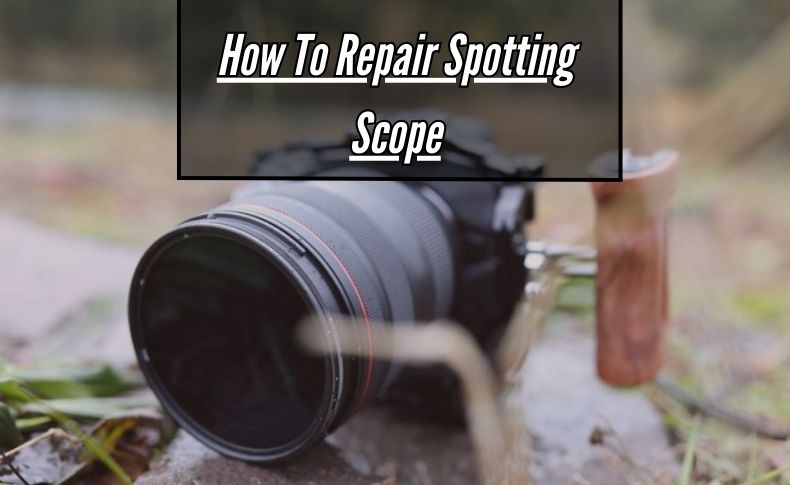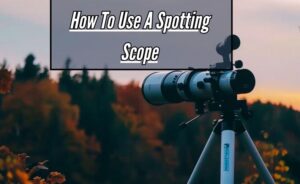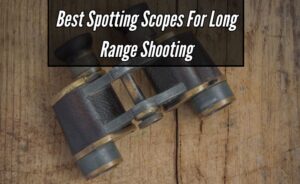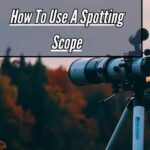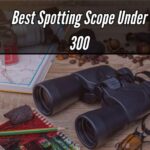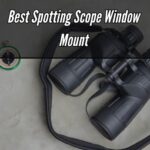If you’ve got a spotting scope that’s not performing as it should, don’t fret! Repairing it might be easier than you think. Whether it’s blurry images or a misaligned focus, addressing these issues can enhance your viewing experience.
How To Repair Spotting Scope? A spotting scope is easy to repair. Determine the problem first—blurry pictures or focus issues, for example. Examine alignment and clean the lenses. Tighten screws or adjust focus knobs as needed. See a professional for large repairs. Your spotting scope will quickly return to operating at peak efficiency with a little perseverance and simple tools.
In this guide, we’ll walk you through the process of repairing your spotting scope step by step. From diagnosing common problems to simple fixes you can do at home, you’ll learn practical tips to get your scope back in top condition. No need for advanced tools or technical expertise—just a bit of patience and a willingness to troubleshoot.
Introduction to Spotting Scope Repair
Spotting scopes are valuable optical instruments used for various outdoor activities like birdwatching, hunting, target shooting, and nature observation. These devices are designed to provide users with a closer and clearer view of distant objects, making them an essential tool for enthusiasts and professionals alike.
However, like any mechanical device, spotting scopes can experience wear and tear over time, leading to the need for repair and maintenance. In this article, we will delve into the basics of spotting scope repair, highlighting the importance of keeping your equipment in optimal condition.
Understanding the Components of a Spotting Scope
Before delving into repair techniques, it’s crucial to understand the components that make up a spotting scope. A spotting scope typically consists of a main body, an eyepiece, an objective lens, focus knobs, and various adjustments for zoom and image stabilization.
Each of these components plays a pivotal role in delivering a clear and magnified view. Identifying these parts will aid in diagnosing issues and understanding how they contribute to the overall functionality of the scope.
Common Issues Encountered
Spotting scopes can encounter a range of issues, both minor and major, over their lifespan. These issues may include blurry images, misalignment, zoom mechanism problems, damaged lenses, and issues with the focus mechanism.
Recognizing these problems early on can prevent further damage and costly repairs. While some problems might be due to manufacturing defects, most issues arise from improper handling, exposure to harsh environmental conditions, or accidents during use.
Essential Tools for Basic Repairs
For minor issues, enthusiasts can perform basic repairs at home with the right tools. Some essential tools include lens cleaning kits, screwdrivers, alignment tools, and lubricants. Cleaning lenses, realigning components, and ensuring smooth adjustments are some of the tasks that can be undertaken without professional assistance.
However, it’s important to exercise caution and refer to the manufacturer’s guidelines before attempting any repairs to avoid causing more harm.
When to Seek Professional Help
While basic repairs can be carried out by enthusiasts, some problems require the expertise of professional technicians. Complicated issues like internal mechanical failures, severe lens damage, or complex alignment problems are best left in the hands of experienced repair services.
Attempting to fix these problems without proper knowledge might worsen the situation, leading to more expensive repairs or rendering the scope irreparable. It’s advisable to contact the manufacturer or a reputable optics repair center for such cases.
Identifying Common Issues with Spotting Scopes

Spotting scopes are essential tools for outdoor enthusiasts, birdwatchers, hunters, and amateur astronomers, offering the ability to observe distant subjects with greater detail.
However, like any optical instrument, spotting scopes can experience certain issues that may hinder their performance. It’s crucial to identify these common problems to ensure optimal usage and to make informed decisions when purchasing or maintaining a spotting telescope.
Blurry Images and Lack of Focus:
One of the most prevalent issues with spotting scopes is blurry images or difficulty in achieving a sharp focus. This can result from various factors, such as misaligned lenses, improper adjustment of the focus knob, or even atmospheric conditions like heat waves or humidity.
To address this, users should start by checking the alignment of the objective and eyepiece lenses, adjusting the focus knob patiently, and considering the environmental factors affecting image quality.
Chromatic Aberration:
Chromatic aberration, also known as color fringing, occurs when different colors of light are focused at slightly different points, leading to color distortion around edges. This issue can be particularly noticeable in high-contrast situations.
To mitigate chromatic aberration, users should invest in spotting scopes with apochromatic or extra-low dispersion (ED) glass, which minimizes color dispersion and enhances image clarity.
Image Distortion and Straightness:
Another issue that users might encounter is image distortion or non-uniform straightness. This can be caused by poor quality optics or misalignment within the spotting scope.
It’s advisable to inspect the spotting scope for any visible defects or damage to the lenses, as well as to ensure proper assembly. Utilizing a sturdy tripod and adapter can also help maintain the straightness of the image.
Limited Field of View:
Some spotting scopes may have a limited field of view, making it challenging to locate and track moving subjects. This limitation can be frustrating, especially for wildlife observers.
When choosing a spotting telescope, opt for models with wider fields of view to enhance the viewing experience and ease of tracking subjects, particularly when observing birds in flight or animals on the move.
Low Light Performance:
Spotting scopes, like all optical devices, may struggle in low-light conditions, such as during dawn or dusk. Users might experience reduced image brightness and clarity during these times.
To address this, selecting spotting scopes with larger objective lenses can help gather more light and improve low light performance. Additionally, using higher magnification eyepieces might exacerbate this issue, so finding a suitable balance is essential.
Cleaning and Maintenance Procedures of spotting scope
Spotting scopes are valuable optical instruments used for a variety of outdoor activities, from birdwatching to target shooting.
Proper cleaning and maintenance are essential to ensure their longevity and optimal performance. By following these guidelines, you can keep your spotting scope in pristine condition for years to come.
Regular Dusting and Cleaning
Dust and debris can accumulate on the lenses and body of the spotting scope, affecting image clarity and overall functionality. Begin by using a soft brush or air blower to gently remove loose particles.
For more stubborn dirt, a microfiber cloth can be used to wipe down the exterior surfaces. When cleaning lenses, avoid using excessive pressure or abrasive materials that could scratch the delicate glass.
Lens Cleaning Techniques
The lenses are the heart of a spotting scope, and maintaining their cleanliness is crucial. Start by using a lens brush or air blower to remove any loose particles. To clean smudges or fingerprints, breathe gently on the lens to create moisture and then use a lens cleaning solution along with a microfiber cloth.
Wipe in a circular motion from the center of the lens outward. It’s important to use a cleaning solution specifically designed for optics to prevent damage to lens coatings.
Waterproof and Weatherproof Care
Many spotting scopes are designed to be waterproof and weatherproof, but it’s still important to take precautions. After using the scope in wet or damp conditions, make sure to dry it thoroughly with a clean, dry cloth.
Pay special attention to the eyepiece and objective lens areas where water can accumulate. If your spotting scope is submersible, always ensure that the sealing mechanisms are clean and free from debris to maintain its water resistance.
Tripod Maintenance
The tripod or mount that supports your spotting scope also requires attention. Check for any loose screws, knobs, or parts that might need tightening.
Lubricate moving parts if necessary, using appropriate lubricants that won’t attract dust or dirt. Additionally, periodically clean the tripod’s legs and feet to prevent the buildup of grime that could affect stability.
Storage and Protection
When your spotting scope is not in use, it’s essential to store it properly to prevent damage. Keep it in a protective case or padded bag to shield it from dust, moisture, and potential impacts.
If possible, store the scope in a cool, dry place away from direct sunlight, extreme temperatures, and humidity, which can cause internal condensation and potentially harm the optics.
Addressing Optics and Focus Mechanism Problems of spotting scope
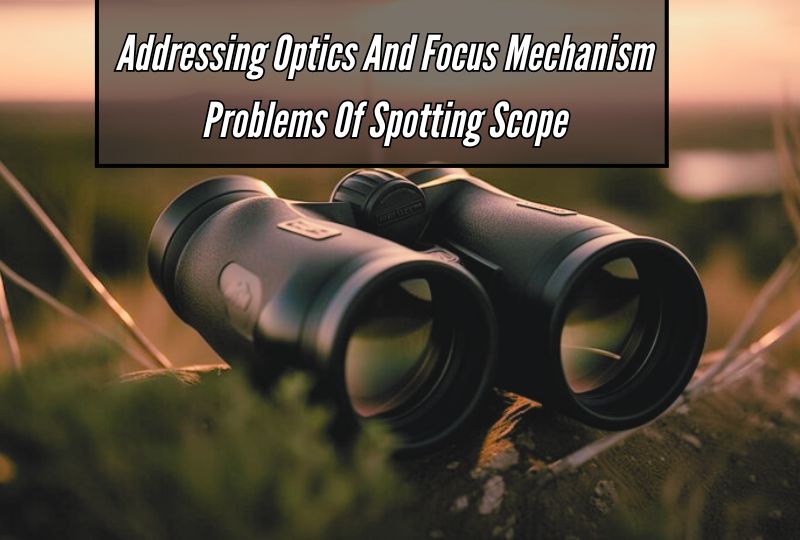
Spotting scopes are essential tools for enthusiasts and professionals engaged in activities such as birdwatching, wildlife observation, target shooting, and astronomy. These optical devices are designed to provide high magnification and clarity over long distances.
However, like any precision instrument, spotting telescopes can encounter issues related to optics and focus mechanisms, which can hinder their performance. In this article, we will delve into some common problems associated with spotting scopes’ optics and focus mechanisms and explore effective ways to address them.
Blurry Images and Chromatic Aberration:
One of the most frequent challenges users encounter is the production of blurry images and chromatic aberrations. These problems can occur due to various factors, including poor quality optics, misalignment of lenses, and the presence of chromatic aberration.
To address this, it’s essential to invest in spotting telescopes with high-quality glass and multicoated lenses, as these can significantly reduce aberrations. Regularly cleaning the lenses and ensuring proper storage can also contribute to maintaining clear optics.
Difficulty in Achieving and Maintaining Focus:
Achieving and maintaining a sharp focus is crucial for accurate observations. Many users struggle with the focus mechanism, which might be too sensitive or too rigid.
To alleviate this, opting for spotting telescopes with dual-focus systems can provide better control over the focus adjustment. Additionally, practicing with the focus wheel and familiarizing oneself with its sensitivity is essential to quickly achieve the desired focus.
Focusing at Different Distances:
Spotting scopes are often used to observe objects at varying distances, from nearby birds to distant landscapes. Some users find it challenging to switch between these distances smoothly.
A workaround for this is pre-adjusting the focus to a mid-range point when not observing objects at extreme distances. This can reduce the need for drastic focus adjustments and make transitioning between distances more seamless.
Temperature and Environmental Effects:
Extreme temperatures and changing environmental conditions can impact the performance of spotting scopes. In cold weather, for instance, the lubricants in the focus mechanism can become less effective, resulting in a stiffer focus wheel.
To counter this, users can store the spotting scope in a protective case when not in use and allow it to acclimate to the ambient temperature gradually. Additionally, selecting spotting scopes with weather-resistant features can mitigate the effects of moisture and temperature changes.
Vibration and Stability Issues:
Achieving a steady view can be challenging, especially when using high magnifications. Vibrations from hand movements or unstable mounting platforms can lead to shaky images.
To address this, using tripods or mounts designed specifically for spotting scopes can provide the stability needed for clear observations. Furthermore, adopting proper posture and utilizing techniques like using a soft shutter release or remote can minimize vibrations induced by the user.
Gathering Necessary Tools and Materials of spotting scope
A spotting scope is a valuable tool for outdoor enthusiasts, birdwatchers, hunters, and nature observers alike. To fully enjoy the benefits of this optical instrument, it’s crucial to gather the necessary tools and materials that enhance its usability and protection.
In this article, we will delve into the essential items you need to have in your arsenal when using a spotting scope.
Spotting Scope:
The core of your setup is, of course, the spotting scope itself. Selecting the right scope that suits your specific needs and preferences is paramount.
Whether you’re looking for a compact scope for hiking or a more powerful one for long-distance observation, ensure it aligns with your objectives.
Tripod:
A stable and adjustable tripod is indispensable for using a spotting scope effectively. It provides a steady base, reducing image shake and allowing for prolonged, comfortable viewing. Look for a tripod with sturdy legs and smooth panning and tilting mechanisms to track subjects smoothly.
Mounting Accessories:
Depending on the spotting scope model, you might need additional mounting accessories. Many scopes offer compatibility with smartphone adapters, digital cameras, or DSLRs for capturing images or recording videos. These accessories open up new possibilities for sharing your observations.
Eyepieces:
Spotting scopes often come with interchangeable eyepieces that offer varying levels of magnification and field of view.
Depending on the situation, you can switch between eyepieces to achieve the desired level of detail or wider views. Some eyepieces also offer features like adjustable eye relief for glasses wearers.
Protective Cases:
Safeguarding your spotting scope from the elements is crucial. A sturdy, padded carrying case will shield it from dust, moisture, and accidental bumps during transportation.
Additionally, consider investing in a stay-on or digiscoping case that keeps your scope protected while in use, without obstructing its functionality.
Clear Vision Solutions: Repairing Blurriness in Spotting Scope Lenses

Are your spotting scope lenses causing you to see blurry images? It’s necessary to have a strong vision to enjoy outdoor pursuits like hunting and birdwatching. We’ll look at practical ways to fix blurriness in spotting scope lenses in this article so you never miss a second of the action.
Understanding Lens Imperfections:
Like any optical instrument, spotting scope lenses are susceptible to a variety of flaws that result in blurriness. These flaws could be smudges, scratches, or even production flaws. Comprehending these problems is essential to dealing with blurriness and getting the lenses clear again.
Utilizing Gentle Cleaning Techniques:
Spotting scope lens cleaning calls for careful handling to prevent additional damage. Dust, grime, and smudges can be successfully removed from lenses without harming the surface by employing gentle cleaning methods, such as wiping the lens with a microfiber cloth and a moderate lens cleaning solution. Before cleaning the lens, using an air blower can also assist remove unwanted particles.
Exploring Advanced Coating Technologies:
The creation of coatings that can improve clarity and lessen blurriness is the result of advancements in lens coating technologies. Clearer images are achieved with anti-reflective coatings, which reduce glare and enhance light transmission.
Investigating these cutting-edge coating choices can greatly improve spotting scope lenses’ performance under varied illumination scenarios.
Addressing Internal Optical Issues:
Sometimes internal optical problems, like misalignment or deterioration of optical components, cause blurriness in spotting scope lenses. To fix these problems and get the lenses clear again, a professional diagnosis and repair may be necessary.
Seeking advice from a skilled technician or manufacturer can assist in locating and successfully resolving these internal problems.
Implementing Protective Measures:
Spot scope lenses can be shielded against environmental conditions that induce blurriness by taking preventive steps. When not in use, lens covers or caps can protect the lenses from dust, moisture, and other impurities.
Furthermore, keeping the scope in a case helps shield it from unintentional harm and preserve the integrity of the lens over time.
Optimizing Viewing Conditions:
Spotting scope lens clarity can be greatly increased by optimizing viewing circumstances. Avoiding extremely high or low temperatures and humidity will help stop condensation and lens fogging, which can make it difficult to see.
Image quality can also be improved by positioning the scope to reduce glare and maximize ambient light, particularly in difficult outdoor settings.
Investing in Quality Optics:
In the end, purchasing top-notch optics is necessary to guarantee sharp eyesight using spotting scope lenses.
Although less expensive alternatives might be sufficient for occasional usage, high-end lenses featuring superior coatings and optical components provide unparalleled performance and clarity. Long-term viewing satisfaction can be increased by making an initial investment in high-quality optics.
Conclusion
In conclusion, repairing a spotting scope doesn’t have to be daunting. By following these simple steps, you can breathe new life into your equipment and get back to enjoying the great outdoors. Always remember to identify the issue, carry out a comprehensive inspection, and then apply the proper remedy.
Care and patience are essential while cleaning lenses, focusing, or repairing parts. You can prolong the life of your spotting scope and save money with a little work and knowledge. Thus, don’t be afraid to take on those repairs—you can accomplish it!
Frequently Asked Questions(How To Repair Spotting Scope)
Can a rifle scope be repaired?
Yes, depending on the extent of the damage, rifle scopes can frequently be fixed. Numerous common problems, including fogging, reticle misalignment, and loose parts, can be resolved by manufacturers or knowledgeable optics repair facilities.
It’s advised to get in touch with the manufacturer or look for a trustworthy repair agency to evaluate the situation and offer a pricing estimate. However, severe damage, such as a cracked or broken lens, may make the scope irreparable.
How do I clean the lenses of my spotting scope without causing damage?
This easy cleaning method will clean your spotting scope lenses without damaging them. To start, blow out any loose dust or dirt with a gentle brush or air blower. Next, dab a microfiber cloth or lens cleaning tissue with a tiny quantity of lens cleaning solution. Wipe the lenses gently in a circular motion, working your way outward from the center.
To avoid scratches, don’t press too hard. Never spray directly on the lenses; instead, slightly moisten the cloth if necessary. Breathe on the lens to create moisture before wiping away any obstinate spots. Maintain sharp, clear vision and guard against future damage by cleaning your lenses on a regular basis.
What should I do if my spotting scope is fogging up internally?
Warming up or cooling down inside your spotting scope is a common problem that can be caused by temperature variations. Removing the scope’s lids and allowing it to adjust to its surroundings for ten to fifteen minutes is the solution. Make sure that during this operation, the objective lens and eyepiece are exposed.
Try putting the scope in a dry, warm place for a few hours if the fog doesn’t go away. Heat sources such as hair dryers and heaters should be avoided since they can harm optics. Another way to avoid internal fogging is to store your scope in a moisture-resistant case while not in use. For best results, keep your equipment stored somewhere dry and cool.
Can I repair a scratched lens on my spotting scope?
Your spotting scope’s lens may need to be repaired professionally because it can be difficult to do yourself. Small scratches won’t have a big effect on performance and might be less obvious when in use. DIY fixes should be avoided since they may exacerbate the problem. Seek advice from the manufacturer or an expert in optics if the scratches impair your viewing experience.
They possess the knowledge and equipment required for accurate repairs. Precaution is essential, so when not in use, always use lens caps and keep your scope in a protective case. The chance of scratches can also be reduced by routinely cleaning with a gentle brush and using the right technique.
How can I fix a loose or misaligned eyepiece on my spotting scope?
This easy fix will help you if the eyepiece on your spotting scope is loose or not aligned properly. First, look for any screws or locking devices close to the eyepiece. Using the proper equipment, generally a screwdriver, gradually tighten them. To secure the eyepiece if there isn’t a visible mechanism, try turning it clockwise. Take care not to tighten too much.
If the problem continues, seek advice from the manufacturer’s customer service representative or think about hiring a professional repair. Refrain from applying too much force as this could result in more harm. Keep an eye out for loose parts on your spotting scope and handle it carefully to avoid more problems with the eyepiece.
Is it possible to replace a damaged rubber armor on a spotting scope?
Yes, you can usually replace the rubber armor on a spotting scope if it becomes damaged. Numerous manufacturers provide rubber armor as one of their replacement parts. For information on compatibility and availability, get in touch with the scope’s manufacturer or authorized dealers. Peel off the damaged rubber armor carefully and slide the new one in to replace the old one.
Ascertain that the new component is made specifically for the model of spotting telescope you own. See the scope handbook or get in touch with customer service if you have any questions regarding the procedure. Maintaining your observation scope properly will help keep the rubber armor from becoming damaged and prolong its lifespan. One way to do this is by utilizing a protective case.
Can I fix a broken tripod mount on my spotting scope myself?
It could be difficult to fix a broken tripod mount on your spotting scope without the proper equipment and knowledge. If the mount is a separate component, look for any visible nuts or screws that could need to be replaced or tightened. If the damage is substantial, though, you should probably get professional assistance or speak with the manufacturer for advice.
Making complicated fixes without the necessary knowledge could make the problem worse. Find out about repair services if your spotting telescope is still covered under warranty. Because prevention is always better than cure, handle the equipment carefully and don’t over tighten when securing it to the tripod. Seek expert repair services for a reliable and long-lasting fix.

